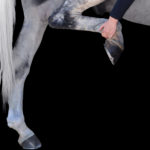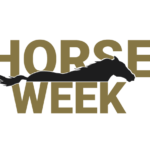By Nancy Jaffer
January 10, 2002, Charlotte, NC — It’s not a marriage yet. But the U.S. Equestrian Team and USA Equestrian are certainly in the going steady stage. Their boards today approved the general structure of a proposal that would dissolve both organizations and create in their place a new National Governing Body for equestrian sports.
The consolidation move comes after seemingly endless months of stomach-churning hostilities between the two over which should be the NGB. It has been a battle that divided the equestrian world, while expending well over $1 million in legal fees, staff costs and undoubtedly, antacids. While this is not the end of the story, it appears to be, as Winston Churchill once said about another war, the end of the beginning.
“We haven’t exchanged rings yet,” cautioned USET Secretary Eric Straus, a member of the negotiating team that is putting the deal together.
“The real hard work,” he added, “is about to start.” His comments echoed those of mediator Rich Young. The Colorado Springs lawyer explained to the USA Eq board and others in a packed room at the organization’s convention here that a five-page document outlining the ramifications of the move is only the skeleton of the yet-to-be-born “NGB Corp.,” as it’s called in the working papers.
It will be up to negotiators, board members, trustees and others involved to put flesh on the bones, and it’s going to take months.
We’ve had two analogies already, marriage and skeletons, so why stop there? USA Eq President Alan Balch, who can’t resist similes, talked about “the potential tribalism of our version of Afghanistan, which I’m calling Equestrisan.”
And that, he says, is not the place where he and USA Eq want to be.
“We stand for unified equestrian sport,” declared Alan, “an indivisible sport dedicated to advancing accomplishment and horsemanship across all levels of excellence, across national and international interests, across all breeds and disciplines and based on protecting and preserving the welfare of competitive horses and fairness in competition.”
And that’s what the plan aims for. Briefly, it calls for three divisions of the new organization–which may or may not be named the U.S. Equestrian Federation, there’s been no decision yet. The sections will be international, for the FEI disciplines; national, for the other breeds and disciplines, and administrative, which will handle such areas as marketing, animal welfare and grievances.
Each division would have its own volunteer trustees, while they would be overseen by 19 directors–five international and five national directors, selected from those divisions’ trustees, as well as an additional five board members named by mutual agreement of the other 10. Four athletes will complete the mix.
The president, administrative division vice president, treasurer and secretary will be elected by the NGB Corp. board outlined above, while the international operating division vice president would be elected by international division trustees from the 15 directors who are not already officers; ditto with the national division veep. Got that?
Meanwhile, the USET will start a foundation to raise funds to support the international division. It, like the international division, will be based at the USET’s Gladstone, New Jersey, headquarters. The bulk of the new NGB would run out of USA Eq’s Lexington, Kentucky, offices, and its several satellites. All employees (with the exception of the foundation) will be working for NGB Corp., or whatever it’s going to be called. In addition to the foundation’s efforts, 80 percent of net revenue from sponsorships that aren’t dedicated to specific non-FEI disciplines or non-international high performance competitions will also go to international efforts.
This is, believe me, the short version. But even the long version leaves a lot of unanswered questions.
One involves the representation of non-international breeds and disciplines, and fears in some quarters that they will be shortchanged under the new arrangement.
Ray Cerniga, a director who is involved with Arabians, felt the international representation was so disproportionate with what was accorded the national breeds and disciplines that he was one of two directors voting against the resolution, which had been approved unanimously earlier in the day by the USET trustees during a teleconference that barred the media.
Ray added, however, “I totally support the concept and I’m glad it’s putting an end to the lawsuits.”
The other director casting a nay vote was former National Hunter/Jumper Council Vice President Joe Dotoli. His concern was separating the jumpers from the hunters by relegating the former to the international side from top to bottom. The council previously voted unanimously to keep the non-FEI jumpers with the hunters.
“There’s no way I could support a resolution that favors separating the hunters from the jumpers,” said Dotoli.
So that’s another problem, and the third is finances.
The USET has millions of dollars in leftover red ink to deal with, and USA Eq is tightening its belt this year. The NGB Corp. will not budget for a deficit. Nor will it invade the financial resources contributed to it by the organizations, without approval of three-quarters of the new corporation’s directors. That’s as far as they’ve gotten with the financial control aspect of the deal, but Rich Young pointed out both sides are involved in “due diligence” in scoping out the other’s finances, so there’s still lots of talking to be done about this one.
As it stands, the plan bears a strong resemblance to the one devised under last year’s failed Strategic Planning Initiative, which USA Eq put forth in an effort to avoid a challenge to its NGB status from the USET.
That didn’t work, but as Eric Straus noted, it took the turmoil of the last year to get to this point.
“Sometimes you only go forward by stubbing your toe. There were things that had to be said before we could come out the other end,” he contended. In the wake of October’s hearing before the U.S. Olympic Committee about which organization should be the NGB, he said, “we learned neither of us would win, so we needed to craft a solution we could live with.”
Balch put it another way.
“Sometimes we need to see…the devastation of an attack on our commonality of interest before we can properly value it. We are, I hope and I believe, in the final stages of what has amounted to a civil war in our sport. It is very much to be regretted that such lessons are so expensive, but all of us as humans seem to have a propensity for having to learn the same lessons repeatedly.”
Rich Young noted that when he and associate Jill Chalmers got involved with mediation once more after the talks halted, then started again in the fall, the limited objectives were “to stop the bloodshed and try to work out an agreement between the warring parties where the sport of equestrian would not be governed on a day-to-day basis by the USOC. As we got into the discussion, something changed, in trying to broker an agreement” that would enable the USET and USA Eq to live together by using Band-Aids and jury rigs.
“As we continued to talk,” the mediator observed, “it became apparent to your negotiation teams that `this is a little silly.’ If we’re going to be putting together a structure that will work for the sport long-term…we need something…that brings the sport together, and takes advantage of all the wonderful experience, skill and dedication that exists on both sides of the equestrian sport.”
He called the proposal a plan “where one plus one may equal four or five or six; not just `if we’re lucky, it will equal two.'”
Well, don’t hire this guy to do your tax returns, but I’m sure you see what he means. Though the angst isn’t completely over, we finally may have something.
I’ll keep you posted. And I didn’t even have a chance to get into the details of what’s happening with the National Hunter/Jumper Council. More on that in my next postcard after the convention ends this Sunday.






